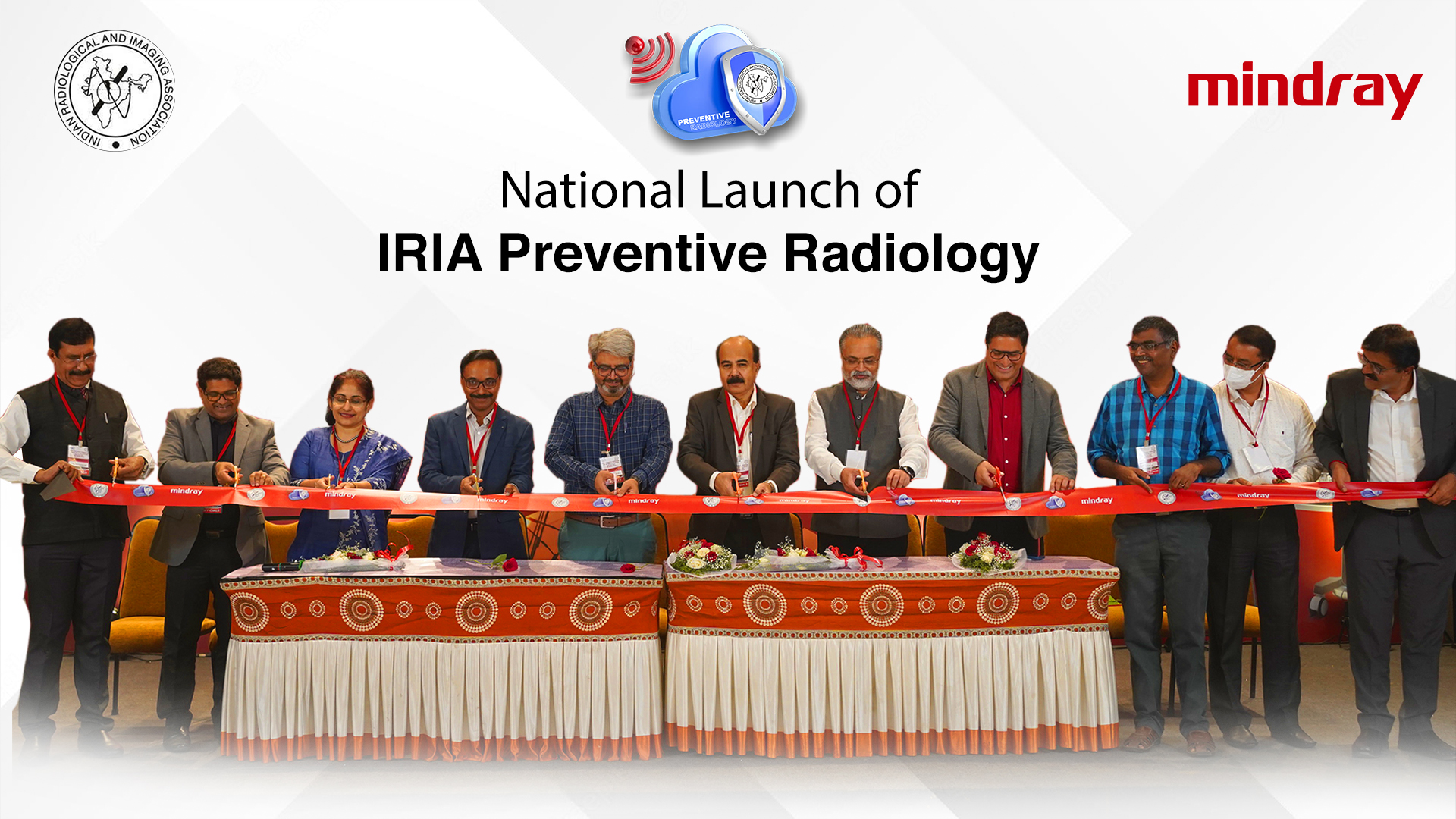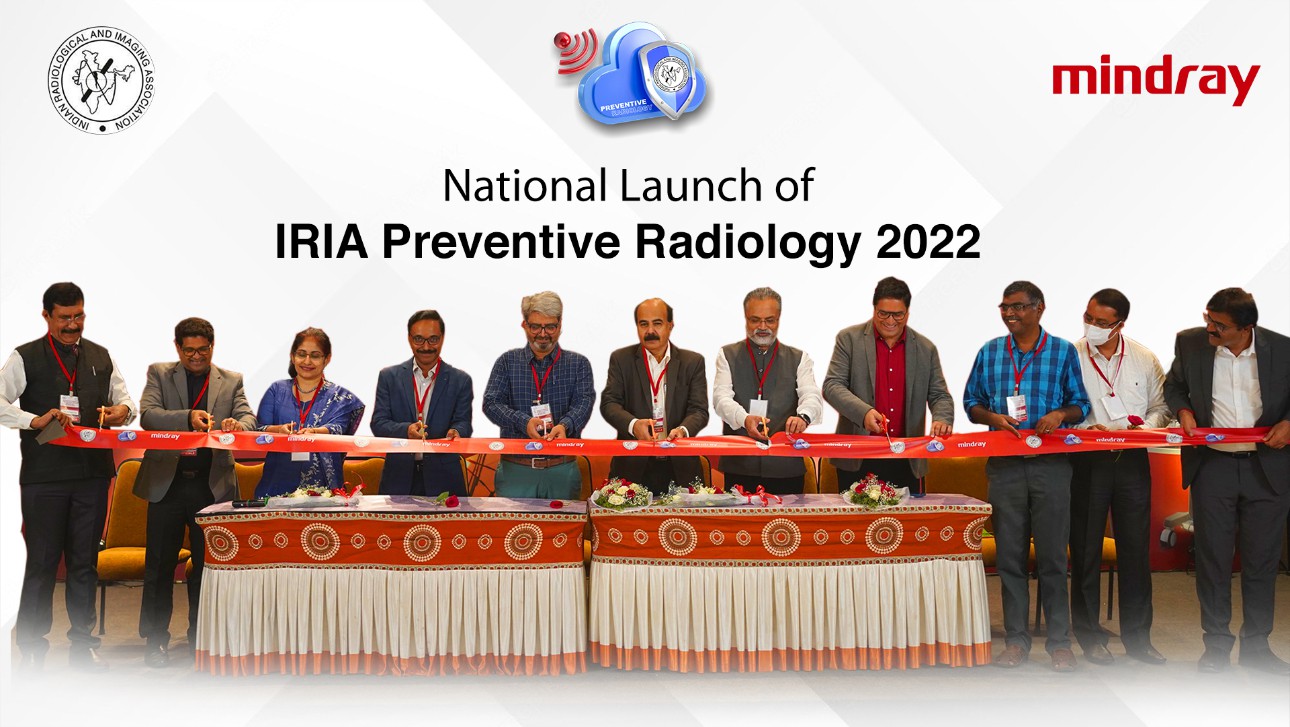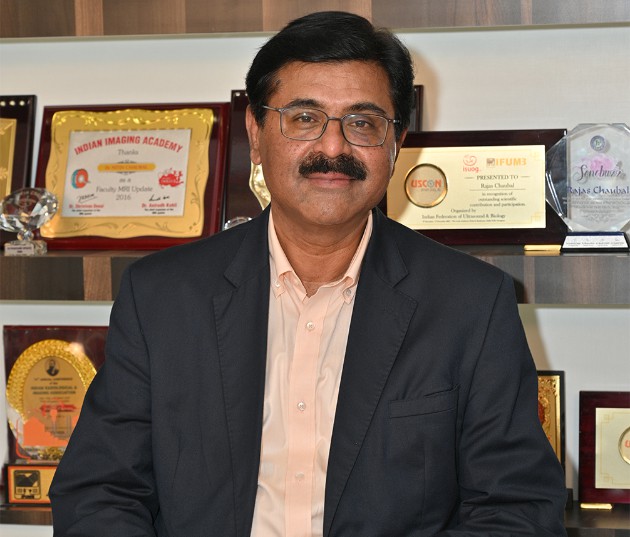Preventive Radiology - A unique initiative from IRIA for developing algorithms to diagnose fatty liver disease earlier using Imaging Biomarkers
Mindray 2023-01-15

India is witnessing Non-Alcoholic Fatty Liver Disease (NAFLD) and Non-Alcoholic Steato Hepatitis (NASH) as the two major problems, with NAFLD becoming endemic in the country. The disease is far more prevalent than one thinks it is. Being the most common form of fatty liver disease, it can happen without causing any symptoms. Hence, it is crucial to make people aware of the disease and its impact, diagnosis, treatment, and prevention.
Training radiologists and enhancing their skills to diagnose fatty liver diseases at an early stage is the need of the hour. “If that does not happen, 20 years down the line, we will have to train our surgeons for more liver transplants, which will become a huge healthcare burden to the nation,” opines Dr. Rijo Mathew, National Coordinator, Preventive Radiology, Indian Radiological and Imaging Association (IRIA).
IRIA, in this regard, has signed an agreement with Mindray India under the title “The diagnostic effectiveness of the new generation ZST Technology-based HFR SWE with M-STB & RLB Map on Resona series for liver elastography” – with its motto “Building Healthier Bharat” – to transform the diagnosis and treatment for NAFLD and reduce its burden in India. The agreement is for two years with 10 multi-center studies on Mindray Resona Series and 12 workshops in different cities.
By the end of the collaboration period, a preventive radiology group headed by Dr Mathew, National Coordinator for Preventive Radiology, IRIA; and Dr. Rajas Chaubal, National Clinical lead and MD, PG Dip MUS-UCAM, Director, Thane Ultrasound Center, Mindray, with a team of radiologists will publish a research article, along with a policy document, that will be presented to the Government of India.
Dr. Mathew states that preventive radiology is going to play a significant role, especially for the non-communicable diseases, which are increasing in great numbers in India.
“There are more than 20,000 radiologists in India in the IRIA. One of our primary aims is to enhance the skill of our radiologists. With the help of these radiological modalities, especially in case of fatty liver, we train them to do the live elastography, which helps them to quantify liver fibrosis and helps, because India is having a large number of fatty liver disease progressing into expecting the non-alcoholic liver disease progressing to cirrhosis. So, if this window of opportunity is open, radiologists can help diagnose those high-risk groups, which can go in for fibrosis, help them to decrease the severity of their disease and bring them to a normal state. There is a reversible process at this point of time, that’s why I always say 20 years down the line, radiologists, if you are not using this opportunity, the only way for the country, the medical system, or the healthcare system of this country is, to enhance the skills of surgeons to do as many liver transplants as possible. So, skill enhancement is an integral part of this programme. Further, we want to do a multi-centric research study with the help of industry. That is why Mindray has partnered with IRIA for this particular project. We want the data from our patient population (1.4 billion people from India) because the standardization has to come from this population rather from the Caucasian population or from the Chinese population. The Indian population data has to be collected, and we are looking into multi-centric studies. We have already initiated, and Mindray has supported IRIA in that initiative. We already have 20 participating centres across the country that have joined this study and the skill enhancement program.”
For the research, Dr. Mathew’s and Dr. Chaubal’s teams look forward to collecting data and implementing it in such a fashion that it becomes relevant for India’s local population, and this may even vary from north India to south India, from the east to the west, as the country has a whole lot of diversity. His current focus is to standardize the procedure in which measurements are taken. Mindray is playing a huge role in this regard by enhancing the skills of radiologists and training them.
Imaging – an integral part of the screening and management of several public health conditions – has become an important tool in the diagnosis and management of diseases. Today’s modern imaging techniques enable healthcare practitioners to evaluate the health of patients at stages that were previously thought impossible. Rapid advancements in medical imaging modalities have resulted in better visualization of structures, to diagnose at early stage and pre-empt complication and further by reducing turnaround times using improved algorithms that provide better interpretations.
Dr. Chaubal emphasises, “Ultrasound really has really good penetration through the length and breadth of this country. It’s very easily accessible to a whole lot of patients and a whole lot of population and we also end up seeing a lot of patients for preventive health checkups, especially in the metro cities. We have a huge number of patients. People who are actually walking into our OPD, probably don’t know they have a fatty liver, and we are the first ones to really identify it and flag it up to them. That is where our role intensifies because if you are the first one to see the patient, you are able to detect it and counsel the patients. That will go a long way ahead in managing the patients and prevent worsening of any situation."
While we have been restricted to what we call as a visual scaling of visual analysis on ultrasound, what I may see as an individual may be different, or what I interpret rather as one person maybe different from what the second or the third person interprets, but now we are moving into functional imaging as well where we are able to get actual functional values. We have elastography measurements, attenuation values, ways to access the echogenicity of the liver compared to the kidney, all of which was not possible till some time back. So, now, we are getting more and more functional data which is independent of how I see it or how a second or third person sees it. However, the skill enhancement of the whole team of radiologists is important, because all of us need to be on the same page.”
Dr. Mathew mentions, “Preventive radiology is a new area that IRIA intends to explore in the new anventive medicine – a focus that we would like to give on early detection of diseases with the help of imaging biomarkers and the strategy of risk stratification. We would like to focus on four areas primarily: (a) NAFLD and NASH, (b) Risk stratification of coronary artery disease and vascular health, (c) Cancer screening with a multi-modality approach, and (d) Screening with imaging biomarkers for diseases like Chronic Kidney Disease (CKD), Chronic Liver Disease (CLD), chronic heart disease, etc. For this, we have partnered with Mindray for a multi-centric study on their sonography technology for the quantification of liver fibrosis. There will be a skill enhancement program in 12 states in India, which will be carried out in the next two years.”
Shedding more light on the Mindray-IRIA collaboration, MC Ekambaram, National Marketing Manager, Ultrasound Division, Mindray India, informs, “We have been waiting to work with IRIA in India to develop certain protocols, which will not only help a group of patients, but, on a large scale, we can probably focus a particular disease where we could establish or study values for accuracy and repeatability from the Indian perspective. The way Mindray has been progressing for some time in the last particularly five-to-six years, it’s important for us to have an association with the strong bodies around the world, including IRIA in India to work together for providing better healthcare for all. It’s a collaboration of physicians and engineers together to make something possible. So, we, at Mindray are looking forward to this next couple of years, and beyond.”
With its clear aim, Mindray will spare no effort to be a trusted partner in building a healthier Bharat – and will support and help the healthcare community in the country to grow stronger by deepening its technological capabilities.
Dr. Mathew further states that preventive radiology is going to play a significant role to especially the non-communicable diseases, which are increasing in great numbers in India.


